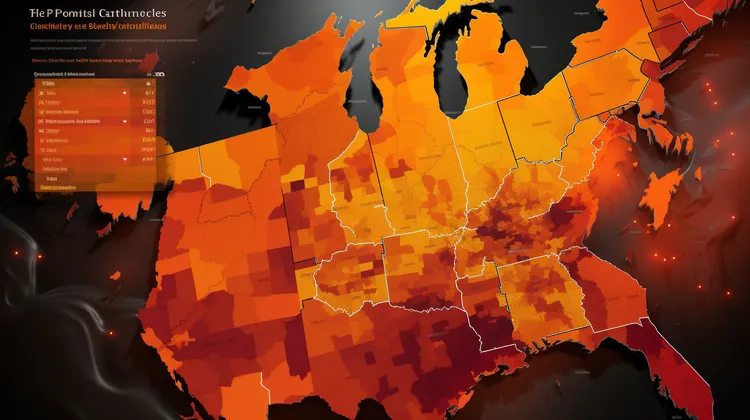
October U.S. CPI Unchanged, Bitcoin Up Nearly 1%
In an unexpected turn of events, the United States Consumer Price Index (CPI) remained unchanged in October, signaling a potential slowdown in inflationary pressures that have been a cause for concern among consumers and policymakers alike. The data, released by the Bureau of Labor Statistics, came as a surprise to economists who had forecasted a moderate increase. This pause in inflation growth could have significant implications for monetary policy and market sentiment.
The flat CPI in October contrasts sharply with the steady rise observed over the past year, where prices for goods and services across the U.S. increased at rates that reignited conversations about inflation not seen in decades. A major component driving the CPI stagnation was a dip in energy prices, which had seen a surge in previous months, largely due to supply chain disruptions and geopolitical tensions. Price gains in other categories, such as housing and food, slowed down, contributing to the overall halt in CPI growth.
Market reactions to the CPI data were swift and pointed. Equities, which had been under pressure from higher inflation expectations and prospects of further interest rate hikes, saw an uptick as investors interpreted the data as a sign that the Federal Reserve might ease off on its aggressive tightening path. Bond yields, on the other hand, edged lower following the announcement, with the two-year Treasury note, particularly sensitive to rate moves, witnessing a decline in yield as the demand for safer assets increased.
One of the most notable market movers in response to the CPI report was Bitcoin, which added nearly 1% to its value shortly after the figures were publicized. Bitcoin, often touted as a hedge against inflation by its proponents, has shown a complex relationship with inflation indicators and monetary policy shifts. The generally flat CPI may signal to some investors that the inflation fears which had diminished the appeal of risk assets, including cryptocurrencies, were potentially overblown—at least for the time being.
Bitcoin’s resilience in the face of the CPI data is partially attributable to its evolving role in the financial ecosystem. As a non-sovereign asset, Bitcoin does not carry the same direct ties to national economic policies as fiat currencies. This characteristic can attract investors looking for alternatives when traditional markets show signs of unpredictability or when the monetary policies become averse to yield generation.
The cryptocurrency’s slight gain also reflects the broader sentiment in the digital asset market, which has been seeking direction amidst a backdrop of tighter financial conditions and economic uncertainty. While Bitcoin has not been immune to the sell-offs that have rattled the broader markets, moments such as these, where it diverges positively from traditional market reactions, help to bolster the narrative that cryptocurrencies possess unique value propositions.
Analysts caution, That one month’s CPI data should not be taken as a definitive indicator of a sustained shift in inflation trends or economic conditions. The upcoming months will be critical to determine whether October’s stagnancy was an anomaly or the beginning of a more stable period for prices. Supply chain adaptations and the potential for energy price rebounds could reverse the trend seen in October, complicating the Federal Reserve’s decisions on future rate adjustments.
For the crypto market, particularly Bitcoin, the attention will now turn to whether this modest uptick can transform into a sustained rally or if it’s merely a knee-jerk reaction to broader economic news. October’s surprise CPI number and the resultant performance of Bitcoin highlight the cryptocurrency’s growing influence and its complex dance with macroeconomic factors.
As the year progresses into its final stages, all eyes will remain on the trajectory of inflation and the Federal Reserve’s approach to it. Investors will continue to look for cues in traditional economic indicators, such as the U.S. CPI, to inform their strategies across asset classes. Meanwhile, Bitcoin’s near-term response to these indicators will be scrutinized for insights into its maturation as a financial asset and its potential decoupling from traditional market dynamics.
While the U.S. CPI standing still in October might offer a temporary respite to those worried about rampant inflation, it leaves many questions unanswered about future economic policy and market directions. For Bitcoin and the broader cryptocurrency sector, the ongoing challenge will be to navigate these macroeconomic waves while establishing a clear and independent trajectory for growth and stability amidst global financial uncertainty.
4 thoughts on “October U.S. CPI Unchanged, Bitcoin Up Nearly 1%”
Leave a Reply
You must be logged in to post a comment.
This could be uncharted territory for our economic journey. An unchanged CPI offers a unique moment to plot new courses.
With the CPI standing still, it’s a curious moment for Bitcoin and other cryptocurrencies. Wondering where we’ll go from here!
Moving at a snail’s pace. A flat CPI is hardly a win if we’re still crawling under the weight of last year’s hikes. Slow and steady isn’t winning this race.
To everyone who was stressed about inflation we’ve got a month of reprieve! Now, let’s see what the next one brings.